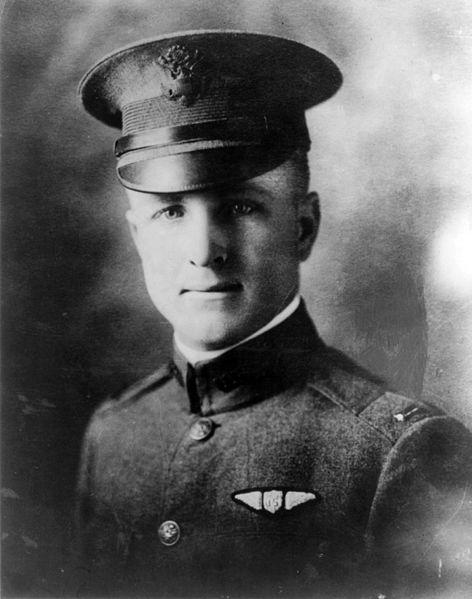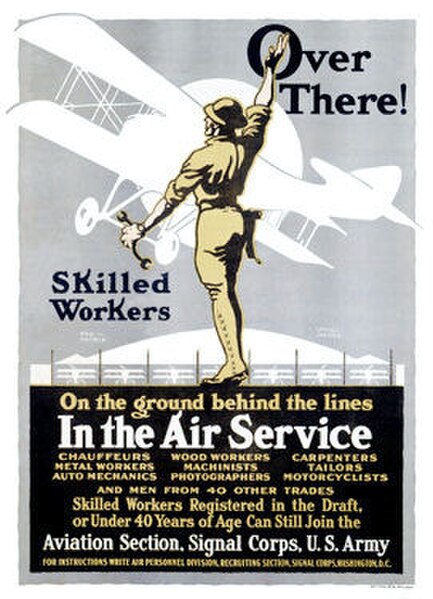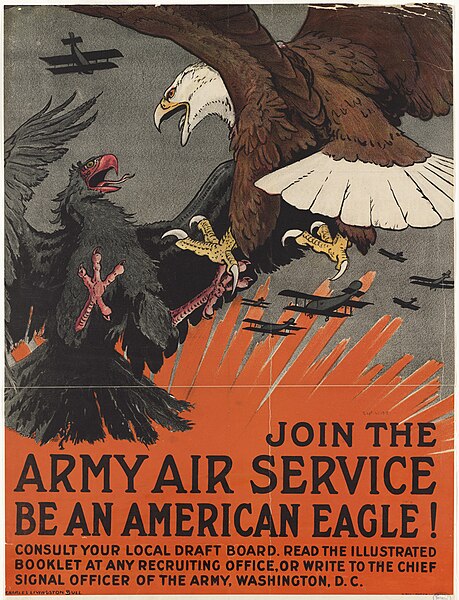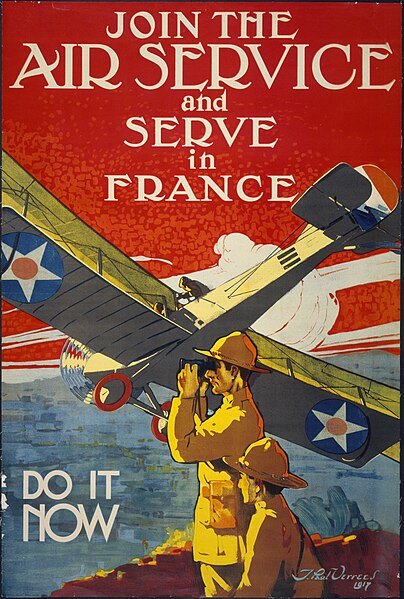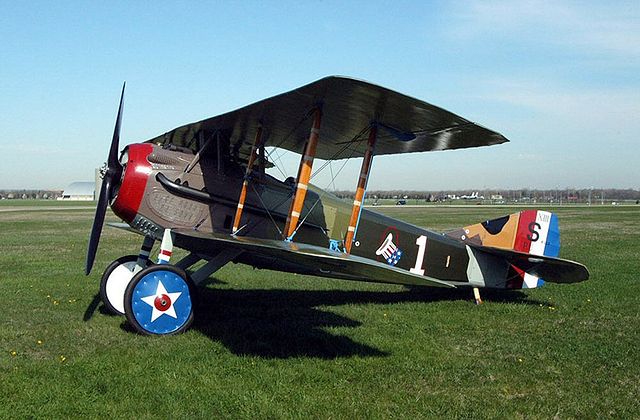Frank Luke Jr. was an American fighter ace credited with 19 aerial victories, ranking him second among United States Army Air Service pilots after Captain Eddie Rickenbacker during World War I. Luke was the first airman to receive the Medal of Honor and first USAAS ace in a day. Luke Air Force Base, Arizona, a United States Air Force pilot training installation since World War II, is named in his honor.
Frank Luke Jr.
Lt. Frank Luke Jr. with his SPAD S.XIII on September 19, 1918.
A SPAD XIII painted to represent the one flown by Frank Luke Jr. The plane is approximately 80% original parts from several aircraft. It is one of five surviving today and is on display in Terminal 3 of Phoenix's Sky Harbor Airport.
Frank Luke Jr. Medal of Honor on display in the Early Years Gallery at the National Museum of the United States Air Force.
United States Army Air Service
The United States Army Air Service (USAAS) was the aerial warfare service component of the United States Army between 1918 and 1926 and a forerunner of the United States Air Force. It was established as an independent but temporary branch of the U.S. War Department during World War I by two executive orders of President Woodrow Wilson: on May 24, 1918, replacing the Aviation Section, Signal Corps as the nation's air force; and March 19, 1919, establishing a military Director of Air Service to control all aviation activities. Its life was extended for another year in July 1919, during which time Congress passed the legislation necessary to make it a permanent establishment. The National Defense Act of 1920 assigned the Air Service the status of "combatant arm of the line" of the United States Army with a major general in command.
World War I recruiting poster calling for skilled workers
World War I recruiting poster. Artwork by Charles Livingston Bull
World War I recruiting poster, 1917. Artwork by J. Paul Verrees
SPAD S.XIII in livery of Capt. Eddie Rickenbacker, 94th Aero Squadron. Note U.S. national insignia painted on wheel hubs.

